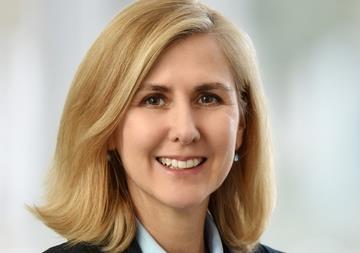The UCITS III Directive has set Europe’s cats among the pigeons and has far reaching consequences for all institutional investors as regulators and investment manager trade organisations consider its impact on the broader issues of appropriate, and best, practice.
This is none truer than in the field of risk management where the abandonment of risk, in its literal definition, has been behind most investment disasters - the most recent being the dot.com and TMT bubbles - when high risk was variously viewed as not owning stocks with single figure revenues and capitalisations in the billions; or being either under-weight, overpriced market leaders (BT at £11 (e16.5) per share springs to mind) or market-weight an index’s major constituents (20% in BT and Vodaphone also springs to mind).
By making risk a responsibility of fund directors, UCITS III is seen as something which may help avoid excessive portfolio volatility and thereby help produce more predictable, and perhaps more stable, performance in the retail funds arena.
If this proves correct, there are many in the industry who think it will become a cornerstone in helping to restore lost trust in the investment process. The hope must be that it does and that its influence extends beyond retail funds into the institutional area and, perhaps, start to reduce the size of Europe’s black hole in pension funding.
Investment performance at its most basic should be the product of strategic asset allocation and security selection. Adherence to a fund’s prospectus, or an institutional portfolio’s mandate, could affect performance to the extent that exposure limitations may restrict performance of the most successful strategy selection decisions.
But the opposite view must also be taken into account whereby such restrictions may negate this perceived ‘disadvantage’ by protecting performance from excessive risk strategies.
Until recently, regulatory compliance had little impact on performance in excess of prospectus or mandate compliance but the UCITS III Directive has changed this,
The element of UCITS III which brought about convergence is encapsulated in Article 21 of the directive which states: “The management or investment company must employ a risk-management process which enables it to monitor and measure at any time the risk of the positions and their contribution to the overall risk profile of the portfolio” and that it must “employ a process for accurate and independent assessment of the value of OTC derivative instruments”.
For retail-orientated asset managers, the directive is already having impact on sales of retail funds as since 13 February 2004, any newly launched fund with EC cross-border sales objectives has had to comply with all elements of the directive – particularly those requiring that the directors of any fund employing derivatives as part (however small) of its strategy, be able to measure and assess portfolio risk at all times.
Existing funds were given until February 2007 to conform although certain regulators, among them Luxembourg’s CSSF and Germany’s BaFin, over-rode the directive’s derivatives qualification, to include funds which had no derivatives whatsoever, and have changed the date of compliance for so called, ‘grandfathered’ funds to as early as December 2005!
Europe’s asset managers are therefore under pressure to install acceptable risk systems, and to ensure that their directors possess the degree of, so called, ‘substance’ demanded by UCITS III
Running parallel with this, the new UK Pensions Act, and attendant reform measures, are placing increased responsibilities on pension fund trustees. Review of the pensions regulator’s Trustee Knowledge and Understanding (TKU) Scope Guidance reveals that specific knowledge and understanding will be required of trustees in areas associated with the principles relating to the investment of a scheme’s assets – including: “risk versus reward, especially a) the nature of risk and b) the risk/reward profile of each asset class”.
This requirement is totally consistent with the wider range of responsibilities to be assumed by pension fund trustees and concurs with the broad recommendations of Myners.
Clearly there is no requirement for trustees to become quant gurus or
to possess maths or rocket science PhDs but the broad principles of
portfolio risk management will become a necessary element of TKU especially when it can be seen to be adding positively to the reward side of the equation.
What contribution such knowledge might make on reducing the size of the black hole, or on a specific scheme’s unfunded liability, is unquantifiable but the lesson of today’s portfolio theory – greatly advanced from the 1950s concept of Modern Portfolio Theory (MPT) – is that risk management can support, rather than belittle, active fund management and passive-enhanced strategies.
While liability modelling will by necessity remain centre stage for the foreseeable future, allocation of a pension fund’s ‘risk budget’ could encourage the adoption of a “higher” risk strategy, with attendant reward, provided trustees carefully monitor their scheme’s risk profile. For long-only equity or bond portfolios this will not be too difficult but where derivatives are used - and today most pension funds will have exposure to a wide range of derivative instruments - day-to-day risk monitoring will require specialist skills or support.
For hedge fund exposure too, trustees will need to be able to assess the impact of market risk on their chosen vehicle - be it a stand-alone hedge fund or a hedge fund of funds - as even in static markets, changes in implied volatility will cause the scheme’s risk profile to change almost daily – and, as demonstrated by LTCM, sometimes with significant and disastrous impact!
It is probably true to state that, until the next time at least, there will never be another LTCM. The circumstances of its failure were unique, but unfortunately contained human-risk elements as well as statistical measurement of volatility (aka risk) and its infinite variants.
Human-risk also played a part in the TMT and dot.com meltdowns when, as noted at the start of this article, a low risk strategy may have been, and in some notable cases was, interpreted as one which sought to contain tracking error within a comparatively narrow band. Such strategy would invariably have involved near market-weighting a selected benchmark’s major constituents – and if not its stocks, certainly closely tracking its sector weightings. In the case of the UK market, this would have implied holding almost one-quarter of UK equity assets in the TMT sector - and almost certainly involved near-market weighting two telecom stocks - BT and Vodaphone - both on growth PERs and both with extended balance sheets as distinct from prior utility sector ratings - low PERs and high dividend yields.
High risk, in contrast, was frequently viewed as underweighting market leaders - in terms both of capitalisation and share price performance - none truer than in the field of dot.com where companies, many now long defunct, were trading on astronomical valuations, many times in excess of 100X revenues with zero earnings and with no prospect of meaningful earnings for 10 years or more. Sadly, many portfolio managers pursuing such strategies (of avoiding these stocks) – ‘prophets of doom’ as they were labelled – lost their institutional mandates, and some their jobs. By perverse paradox, it did not take many months for their ‘foolhardy’ strategies to be proven correct as TMT tumbled and dot.coms plummeted.
It was against this background that the UCITS III Directive was drafted – influenced by asset manager consultation but driven by Brussels and the EC’s regulators. Had the directive been in place before the 2000/2001 debacle, it is probable, but not certain, that some of the worst excesses may have been avoided.
Liability re-assessment under the impact of (then) recently introduced tax and accounting changes, would still have impacted liability shortfalls, but it is difficult to escape the conclusion that greater awareness of risk - both market and human - may have helped to moderate the switch from high risk growth orientated strategies to perceived lower risk mandates, many of which proved subsequently to be among the worst performing areas of the market in both the 2000/2001 fall and the 2002 plus recovery.
So what will the industry gain from UCITS III? First and foremost, a broader appreciation for the role of risk management and second, an awareness that risk management can have positive impact on investment performance. For pension fund trustees, as noted above, this will not require a course in advanced mathematics but it will demand the acquisition of risk knowledge of sufficient capacity to enable them independently to monitor the risk profile of their portfolios. In effect, it is part of trustee empowerment – providing them with the tools to ask the right questions rather than be blinded by market jargon.
How this is achieved is not yet certain but industry bodies including NAPF and IMA can be expected to take a lead in the education process. The practical side of risk monitoring should be relatively straightforward for self-managed funds, although increased use of derivatives will demand specialist application to control extreme event volatility. For funds using external managers, it will become necessary to produce aggregated risk measures for the scheme
as a whole to ensure that the risk profile of one portfolio is not neutralised by that of another - a task not made easy by the fact that a scheme’s underlying managers will invariably be using different risk models - so the issue of model-compatibility could become an important factor.
The bottom-line on this issue will not be drawn for some considerable time but the message it contains is clear – responsibility for risk knowledge and understanding will extend to pension fund trustees. When gained, there is little doubt that it will do other than add to the investment process underlying their scheme and with equity markets already strongly recovered from their 2002 lows, and many believing the easy money already to have been made, risk control will assume greater prominence in the months ahead. Where derivative and hedge strategies are involved – it is as well to remember like, riding bikes on London’s streets, it is not a question of if but when.
Peter Jeffreys is director of Independent Risk Monitoring Limited (IRML), based in London












No comments yet